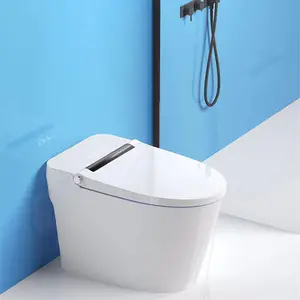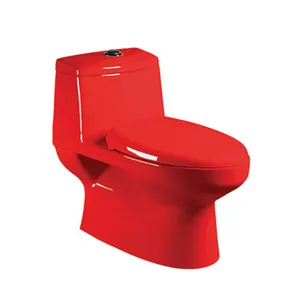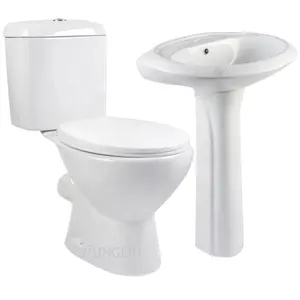A German toilet is often referred to as a toilet bowl that has a unique design featuring a flat, dry shelf-like area in the bowl, allowing users to inspect their bodily excretions before flushing. This design is believed to have originated from a desire for better hygiene and medical monitoring. People can easily check their stools for any irregularities or signs of illness.
The main feature of the German toilet poop shelf is the inspection shelf: the flat surface in the bowl that allows users to inspect their bodily waste before flushing. This is intended for health monitoring and early detection of any abnormalities. It also features a flushing mechanism similar to other toilets, whether it's a gravity flush, pressure-assisted flush, or dual flush system for water conservation. The German toilets are commonly made of ceramic or porcelain, like traditional toilets, for durability and ease of cleaning. And for installation, they are installed in bathrooms using standard plumbing procedures, connecting to the sewer system and water supply. Unlike siphon toilets, German toilets rely on gravity for drainage. The waste simply slides off the ledge and into the drainpipe located directly beneath. Lastly, the flushing capacity may vary depending on the specific model, but it is designed to efficiently remove waste from the inspection shelf.
The first step to maintaining a sparkling
German toilet seat is by regular cleaning of the inspection shelf regularly to prevent the buildup of any residue. This should be done using a toilet brush and a mild cleaning solution to scrub the surface and remove any stains. Another method is by disinfecting the toilet regularly to ensure a hygienic environment. One can use disinfectant toilet bowl cleaners or a mixture of water and vinegar. Also, users should periodically check for any leaks around the base of the toilet or in the flushing mechanism. Address any leaks promptly to prevent water damage.
Furthermore, while cleaning, users should avoid using harsh chemicals or abrasive materials that could damage the porcelain surface of the toilet. And once in a while, one needs to check the flush mechanism for any signs of wear or malfunction. If any issue is noticed, such as a weak flush or continuous running water, one should consider repairing or replacing the flush components. Lastly, One should ensure proper ventilation in the bathroom to prevent mold or mildew growth.














































 浙公网安备 33010002000092号
浙公网安备 33010002000092号 浙B2-20120091-4
浙B2-20120091-4